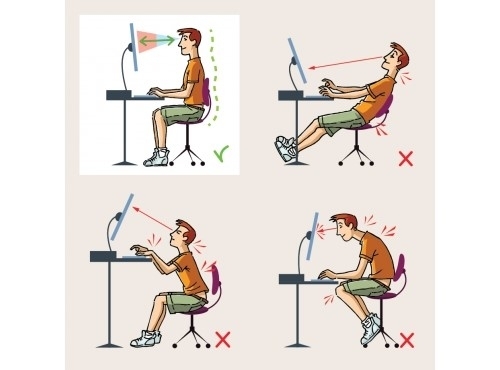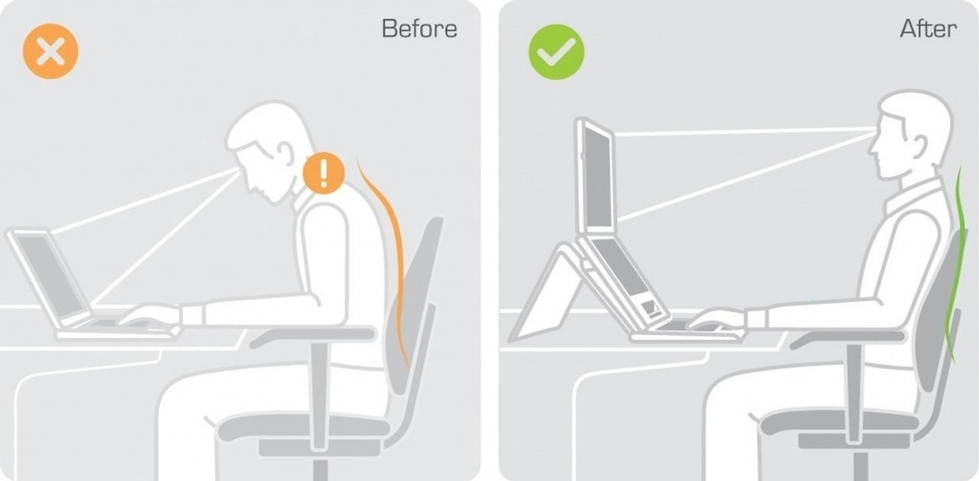Computer Monitor
Why is it important?
- Proper monitor placement can help prevent fatigue, eye strain, and neck and back pain.
- It can also decrease glare, which will improve posture and reduce muscle fatigue.
Height and Distance

- Set up your monitor so that the top line of the screen is at or below eye level. This should align your eyes with the top of the viewing area of the screen.
- You should not need to tilt or bend your neck forward to properly see the monitor.
- Set up your monitor directly in front of you, at least 20 inches away.
- A good general rule is to place the monitor arm’s length away from you.
Ergonomics trick!
Sit with good posture, close your eyes, and when you open them they should land on the address bar. If not, lower or raise the monitor via risers, books, or the built in option if your monitor has it.
Screen Angle
- Set up the monitor directly in front of you, centered with your eyes. This will ensure that you do not have to twist your neck or body to view the screen.
- Note: If you use a program that is not centered on the screen, you may want to set up the monitor so that the center of the program is directly in front of you.
- If possible, set up your monitor perpendicular to a window to avoid glare. If your office is bright, tilt the monitor slightly down to reduce reflections and glare.
NOTE: If you wear bifocals or progressive lenses, you may need to slightly tilt the monitor backwards. This will help make sure that your neck is not in a poor, backwards position.

Combat Fatigue

- Take breaks from looking at your computer screen!
- This will give your eyes a well needed rest and also allow them to re-moisten.
- Alternate between computer and non-computer duties throughout the day.
- If your text looks small after adjusting your monitor set-up, enlarge the font or magnify the image on the screen.
- This will ensure that you are not using extra energy to lean in towards the screen.
References and Resources
- https://www.ehs.pitt.edu/workplace/10steps.html
- https://www.cnet.com/how-to/how-to-set-up-an-ergonomic-workstation/
- https://www.ehihealthcare.com/ergonomic-solutions-healthy-computer-monitor-setup-usage/
- https://www.hardingchiropractic.co.uk/wp-content/uploads/2013/09/poor-desk-posture.jpg
- Additional Resource:
- https://ergo.human.cornell.edu/ergoguide.html
